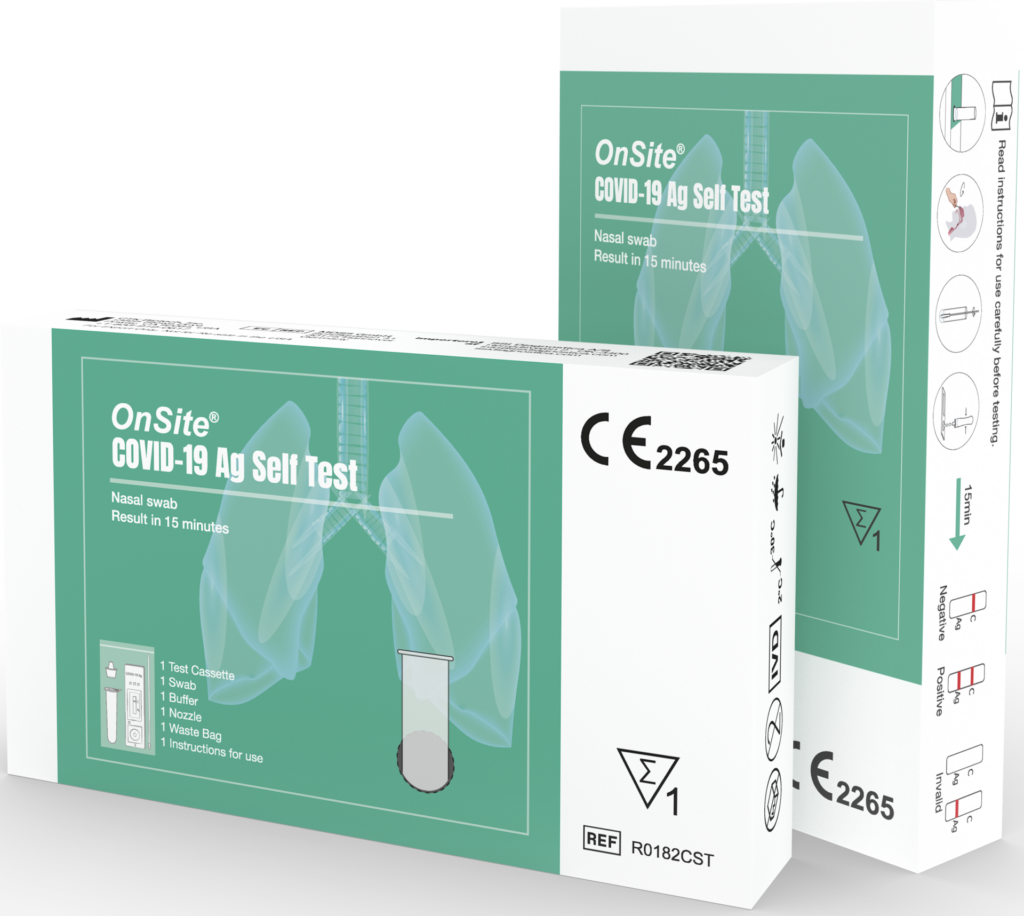OnSite Ag test for self test
OnSite® COVID-19 Ag Self Test is the first self test to receive the WHO Emergency Use Listing for a SARS-CoV-2 self test.
Learn more about the listing.
COVID-19 antigen test for self-testing
On this page, you can find support and guides on how to perform a nasal swab for an antigen test.
You can also ask questions about the test and how to perform it, and you will find some frequently asked questions and their answers.
If you haven’t performed the test before, please view the how-to video above.

Result in 15 minutes
After just 15 minutes, you can read the result of your test. The result must be read within 20 minutes of testing, so keep an eye on the test and get a fast response.
Box contents
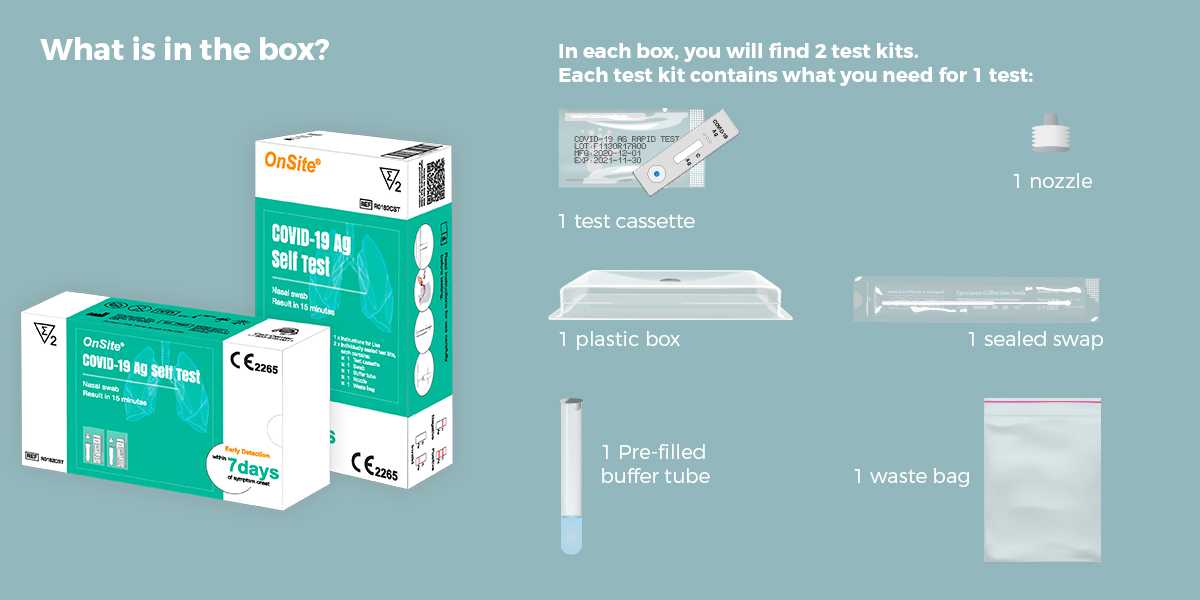
How to read your test result
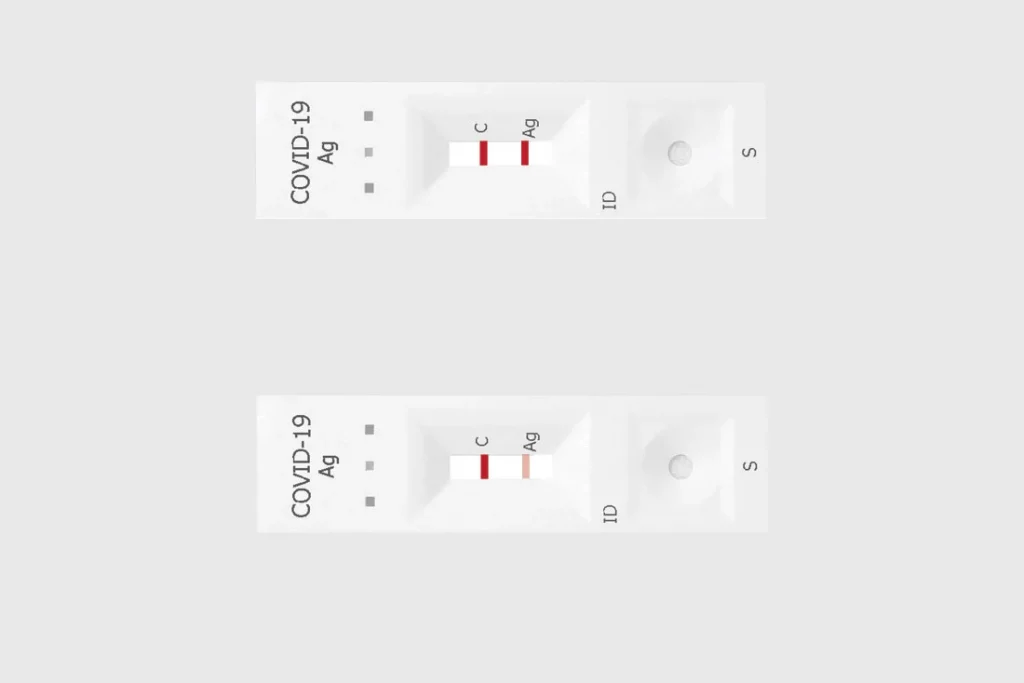
Positive test – course of action:
The test is positive when you have two lines visible.
The line in front of C shows that the control worked.
The line in front of Ag shows that COVID-19 virus has been detected.
Observe local COVID-19 regulations.
Click here to find WHO’s COVID-19 advice.
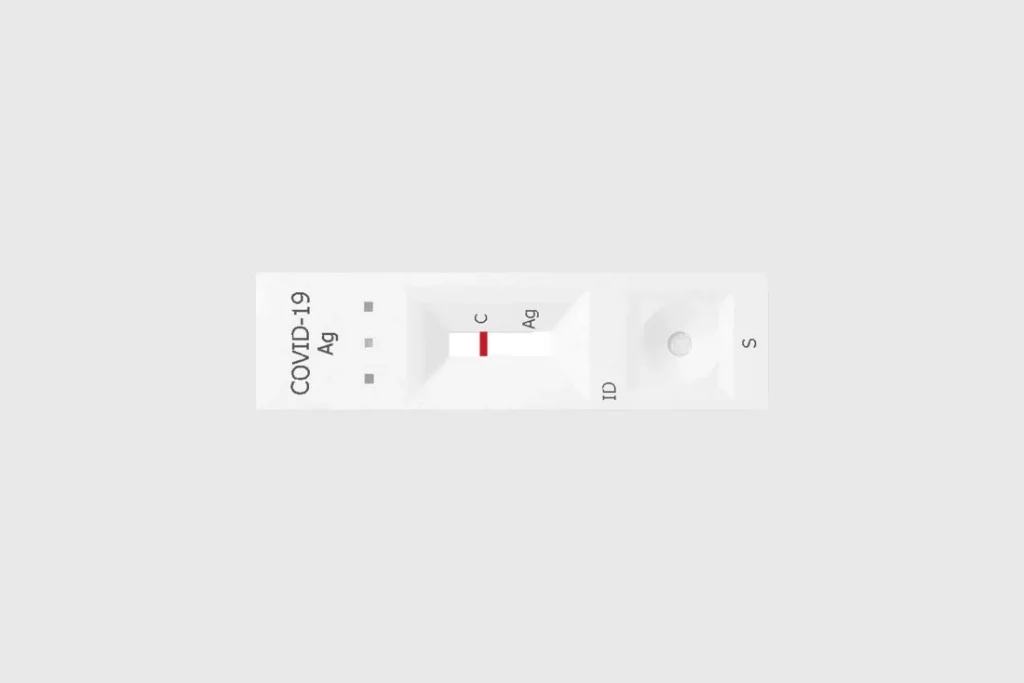
Negative test – course of action:
The test result is negative when you see a clear line in front of C only.
If your test is negative, BUT you experience symptoms of COVID-19, or you have been in close contact with someone infected with COVID-19, you should observe local COVID-19 regulations.
Click here to find WHO’s COVID-19 advice.
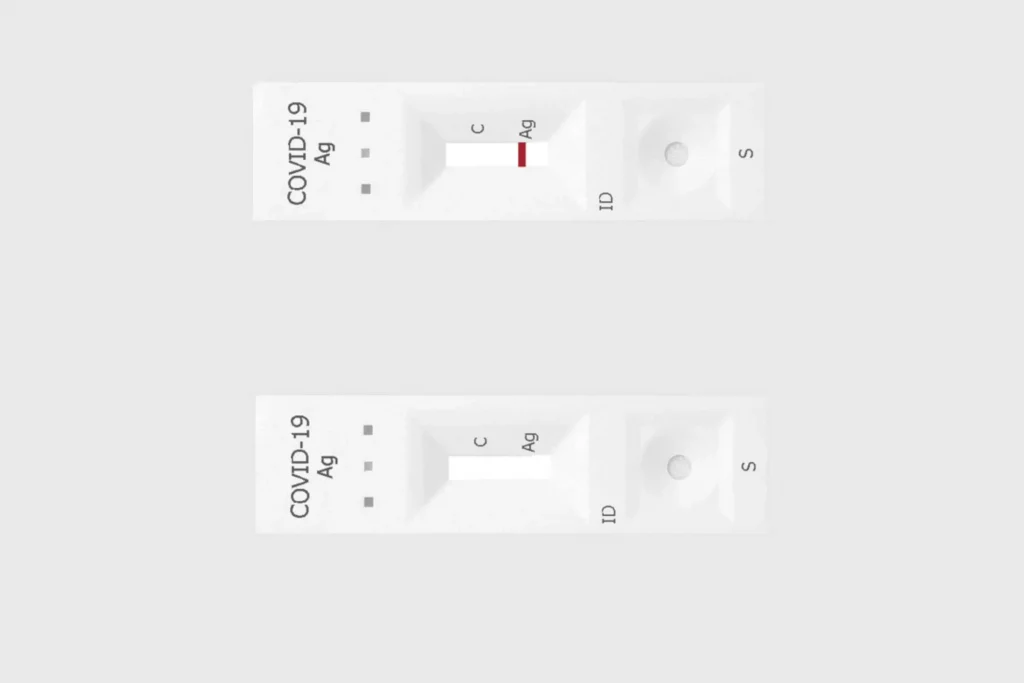
Invalid test – course of action:
If the test does not work as it should (e. g. by not developing a line in front of C), the test must be considered invalid. Try taking a new test. If you get the same result, please contact us via the form at the bottom of this page.
Frequently asked questions
Questions about the test
The swab must enter 2-3 cm into the nostril, varying from person to person. The important thing is to move the swab gently into the nostril until it meets resistance. The cotton part of the swab must enter so far into the nose that it isn’t visible.
If in doubt, ask a friend to check if the cotton part is visible. Now you’re ready to rotate the swab against the nasal wall.
Please watch the video above or see the quick guide for more details and to see how to hold your head while performing the test.
It doesn’t hurt, but it might tickle a little.
Unlike other tests, this type of antigen test does not require the swab to enter far into the nostril. The cotton-part of the swab must enter 2-3 cm into the nostril – no more.
Then you are required to perform a new test, as it is essential to read the result within 20 minutes.
No, you are not required to wear gloves. But you do need to wash your hands or use a hand sanitiser before you perform the test.
No, it is not risky to have the test performed. It is straightforward to perform the test, and the swab is only required to enter 2-3 cm into the nostril until it meets “resistance”.
The box must be stored at room temperature, so you can keep it in a cupboard until you need it.
An antigen test detects virus proteins in a sample through an immunochemical test. The nose is one of the areas where virus proteins can be found. The virus particles are collected with the swab, so performing the test according to instructions and moving the swab around inside the nostril is essential.
An antigen test is less sensitive than a PCR test and does not provide as certain a result. However, it does provide a result after only 15 minutes which means, it can help break chains of infection faster.
The goal is to detect cases of infection that would have gone undetected to practise early prevention of the spread of disease. The advantage of an antigen test is that it provides a result quickly, doesn’t require lab facilities and can be performed anywhere.
If you can’t detect a line on the cassette in front of the letter C after you have performed the test, the test probably hasn’t worked. This issue may be caused by a test malfunction, or perhaps something went wrong when you performed the test. Please revisit the quick guide, watch the video on this page before trying another test. If the second test also fails, please contact us, so we can examine the case.
Yes, the test works even you have a cold. If you have a bad cold, please blow your nose thoroughly – then you’re ready to perform the test.
The date format used is year-month-day. On the test cassette’s packing, you will find a printed production date (MFG) and expiry date (EXP).
e.g. EXP: 2022-12-02
This example indicates that the test must be used no later than 2 December 2022.
Yes. Always wait 15 minutes before reading the result – even if the cassette shows a line at an earlier point.
As nose sizes vary, there is no mark on the swab.
You are required to gently insert the swab into the nose until you meet “resistance”. The cotton part of the swab must enter the nostril entirely.
It’s all straightforward, and once you have tried it, it quickly turns into a routine.
The kit contains a small waste bag. Put all parts into the bag after reading the result and put it into a rubbish bin.
We have performed several studies with this test to ensure that the results are correct. However, no antigen test is as sensitive as a PCR test.
On this page, you can find a quick guide, videos and an instruction manual. You are also welcome to use the contact form at the bottom of the page if you can’t find the answers you’re looking for. We will get back to you as soon as possible.












